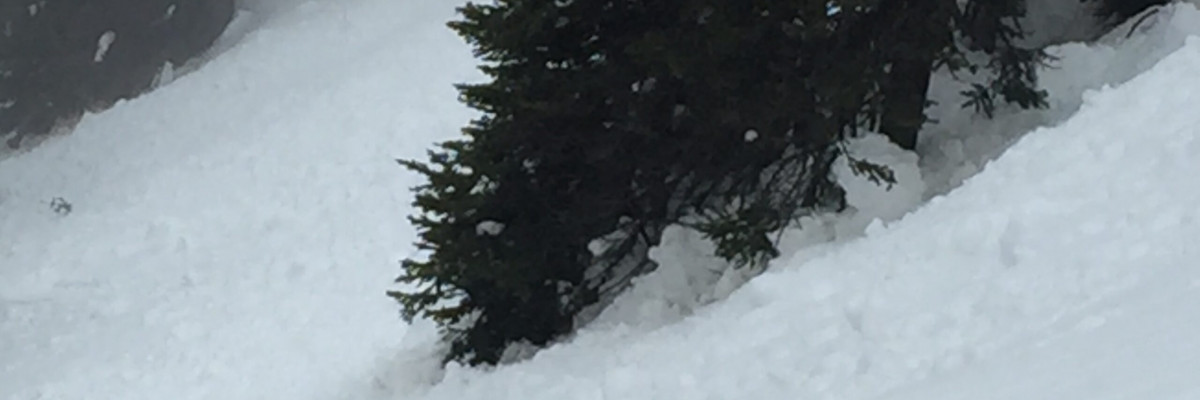Rain, wind, and heavy snow have increased the avalanche danger to CONSIDERABLE. Human triggered avalanches are likely. Warm temperatures and saturated snow with more moisture today are creating dangerous conditions that require conservative decisions and astute route-finding.
Good morning, this is Logan King with the West Central Montana Avalanche Center’s avalanche advisory for Monday, April 8th, 2019. This danger rating does not apply to operating ski areas, expires at midnight tonight and is the sole responsibility of the U.S. Forest Service.
Weather and Snowpack
Mountain temperatures this morning are in the low thirties. Winds have subsided overnight while rain and snow continues to fall across the region. Snow lines have oscillated up and down through the storm complicating things. Upper elevations have received 6-10 inches of snow as of this morning while mid elevations have 2-5 inches mixed with rain and lower elevations have seen entirely rain. All of which adds up to over an inch of SWE in the past 24 hours.
Rain lines were around 6,500 feet yesterday and may creep further upslope today after lowering slightly overnight. 36-hour SWE totals of up to almost 3 inches can be found in the Bitterroot Range with plenty more on the way. Widespread wet avalanches will be seen for the next few days. Below rain line, free water in the snow will decrease the strength of the snowpack and make it susceptible to human triggers and some natural failures. Above rain line, dense snow and strong winds are creating a heavy load of surface snow that is stressing the snowpack. Wet avalanches will be widespread and possible on all aspects and elevations with the largest slides possible at mid-elevations.
Strong wind accompanied the initial snowfall and will make wind drifted snow easy to trigger. Sundays winds moved a good amount of new snow and has created small windslabs at upper elevations that were easily triggered yesterday in the rattlesnake. Newly drifted snow may be sitting on crusts or at a wet snow interface and have poor bonding. Avoid steep wind loaded terrain above 6,000 feet where avalanches will easily be triggered by humans today.
Bottom Line: The heavy load of dense snow and rain have destabilized the snowpack and will continue to do so for the next few days. This is likely the catalysts that will kick off the first significant springtime avalanche cycle.
Avalanche and Weather Outlook
A very moist system continues to impact the region with plenty more to come (forecast). Snow and rain will continue today further enhancing the avalanche danger. However, snow levels look to drop Tuesday and transitions to more snow than rain. The avalanche danger will continue to increase as the storm progresses and avalanche problems may even change as precipitation transitions from rain to snow.
We will conclude our regular forecasts later this week as the storm cycle ends but will continue to post updates as necessary after that. Observations on our public observations page will continue to get posted and shared with the community so keep sending in what you find.
Ski and ride safe.
























